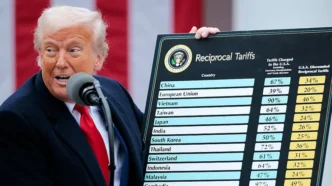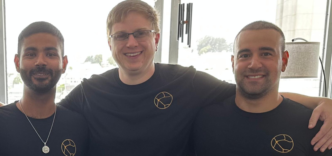Global trade tensions are no longer background noise for the venture capital world. Tariffs — once seen as a distant geopolitical tool — are now shaking the very foundation of how capital flows, startups scale, and exits unfold. One report even calls this moment the biggest transformation in global trade since 1947’s General Agreement on Tariffs and Trade.
What was once considered a niche concern for industrial giants is now hitting startups, venture firms, and limited partners alike. As countries reshape alliances and erect trade barriers, the venture value chain is feeling the squeeze — from early-stage funding to billion-dollar exits.
Let’s break down how tariffs and trade uncertainty are altering the VC landscape, sector by sector.
Capital Formation Under Pressure
Venture capital fundraising was already slowing down before tariffs entered the picture. Now, with global markets jittery, limited partners (LPs) are rethinking their exposure to venture altogether.
For many LPs, tariffs add another layer of macro uncertainty. Some are pulling back capital, especially those overexposed to venture amid falling public market valuations. Others are moving capital into less volatile alternatives like private credit, infrastructure, or hedge funds, which are seen as more predictable in today’s climate.
This shift creates a tough road ahead for emerging VC firms. LPs are sticking with the familiar — backing only veteran funds with long track records. As a result, smaller or newer managers may struggle to raise capital, no matter how promising their thesis.
Startup Fundraising Gets More Selective
At the startup level, the first quarter of 2025 showed signs of renewed optimism. Fundraising activity was climbing, and dry powder remained at record levels. But tariffs may once again flip investor sentiment from hopeful to cautious.
VCs are becoming more selective, prioritizing startups with strong traction, proven resilience, and limited exposure to global supply chains. For founders, this means clear KPIs and airtight execution matter more than ever.
Certain sectors are especially vulnerable. Hardware startups face rising component costs and shipping delays. Consumer brands with international ambitions must navigate complex regulations and higher tariffs on goods. Even cross-border hiring and overseas customer growth are harder to execute under new trade restrictions.
Geography also plays a role. While China’s VC market had already slowed before recent tariff escalations, new tensions could stretch the fundraising cycles in the U.S. and Europe too. In today’s environment, flat rounds and extended diligence are becoming the norm — especially in markets caught in the crossfire.
Exits: The Bottleneck Worsens
Tariffs may have their sharpest impact at the exit stage — the final leg of the venture cycle. And that’s a problem, because exits are already under pressure.
IPO activity remains anemic, despite brief signs of revival in early 2025. Just as the window seemed to be opening, tariff concerns rattled investors and forced several IPO hopefuls — like Klarna and StubHub — to delay plans. In public markets, even a slight dip in confidence can cut valuations and freeze deal flow.
That’s pushed attention toward mergers and acquisitions. M&A is heating up — but slowly and cautiously. Most big tech firms have steered clear of major venture-backed deals in recent years, with a few exceptions like Alphabet’s $32 billion bid for Wiz. Instead, momentum may come from smaller startup-to-startup acquisitions, especially in cash-tight environments where combining teams, consolidating products, or expanding into new markets makes more sense than going it alone.
Meanwhile, secondaries are stepping in as a third path to liquidity. These deals — where investors sell shares in funds or companies before a formal exit — have gained traction. But they’re not immune to market stress. Newer or underperforming funds may face deeper discounts, and general partners may be forced into GP-led secondaries to satisfy LP demands. Still, in a stalled exit environment, secondaries are often the only practical way to return capital.
The New Normal?
Tariffs are no longer a distant policy issue — they’re shaping venture decisions across the board. From how LPs allocate capital to how startups plan their growth and exit, trade barriers are rewriting the rulebook.
Whether this disruption is short-lived or structural depends on what comes next. If tensions cool in Q2, the venture ecosystem might bounce back. But if the current trajectory holds, founders and investors alike will need to rethink old strategies.
In this new age of fragmented globalization, agility is no longer optional — it’s survival.













